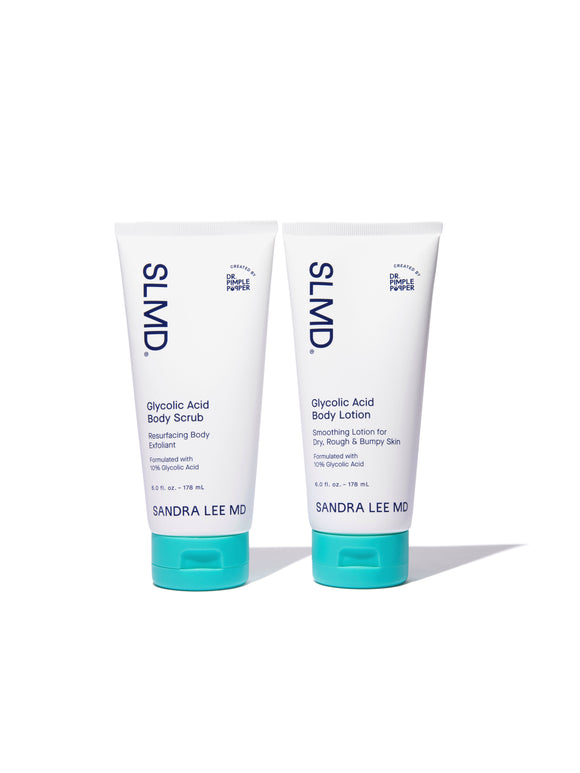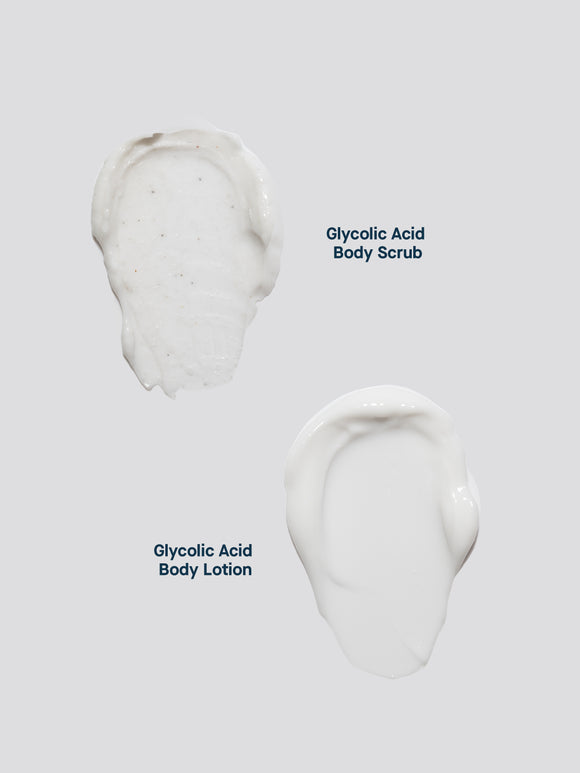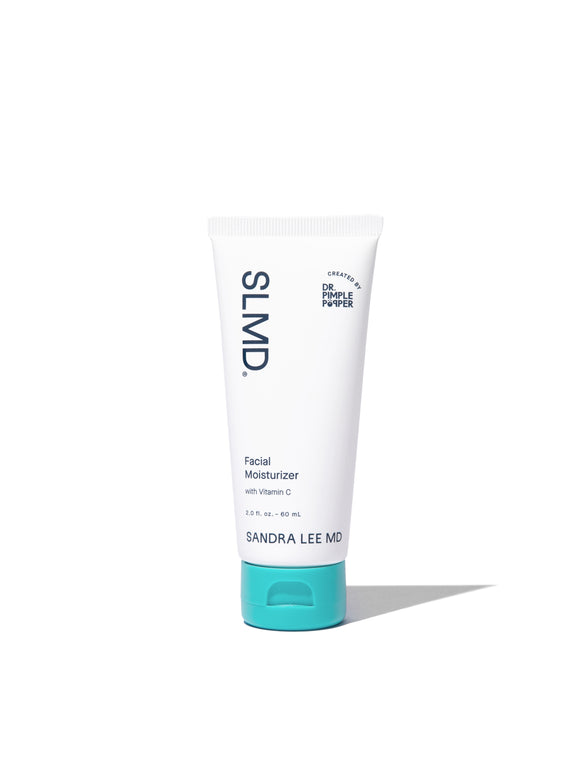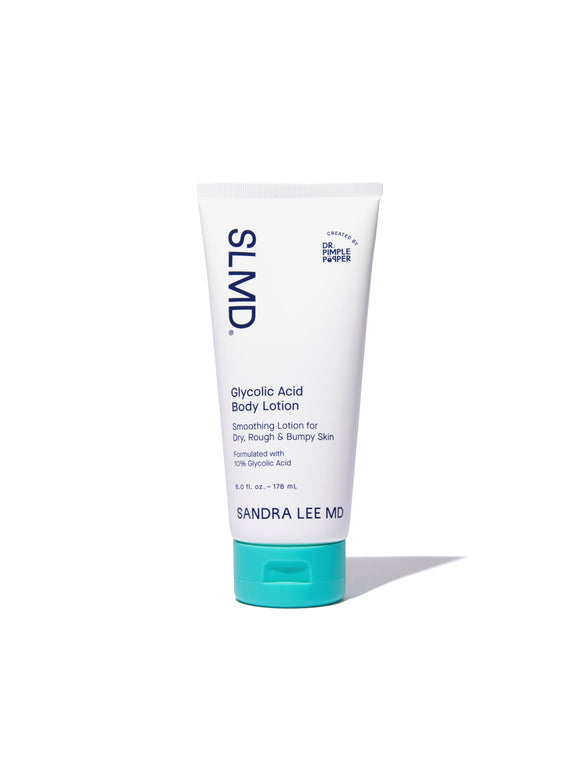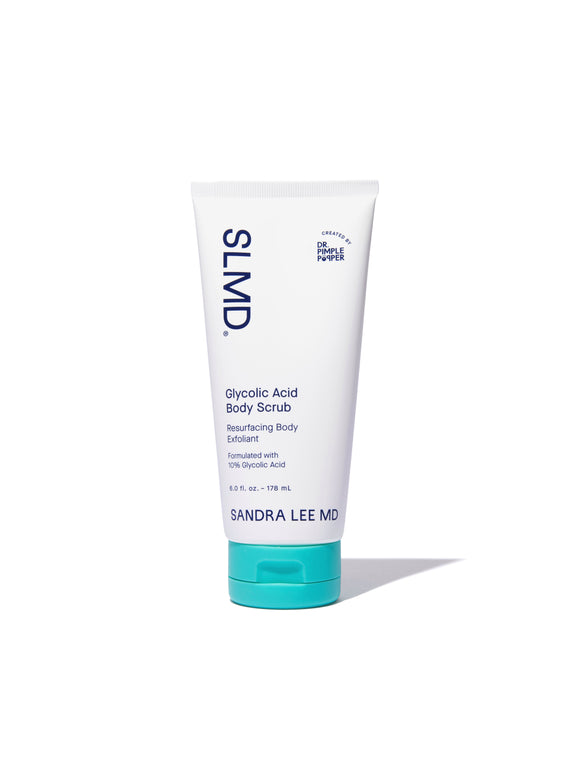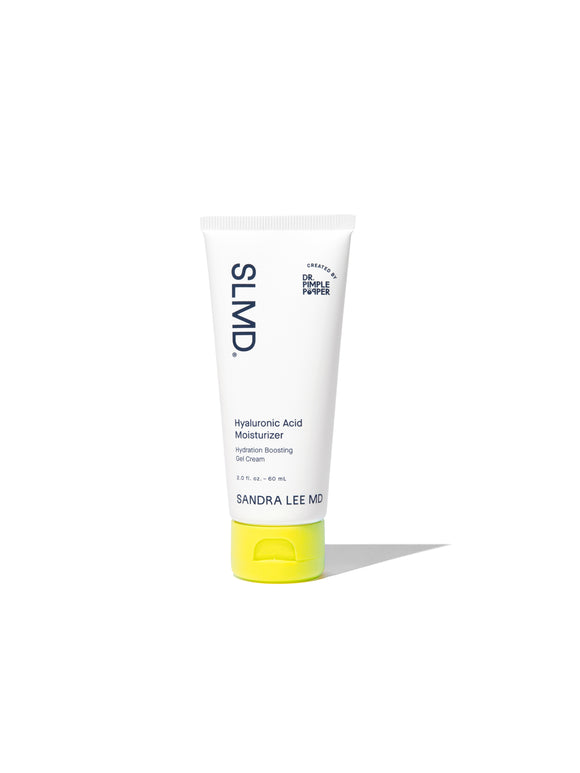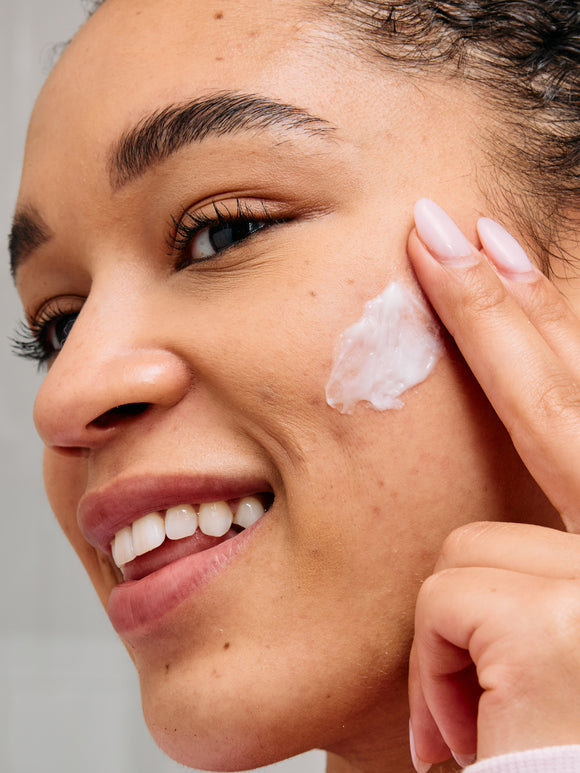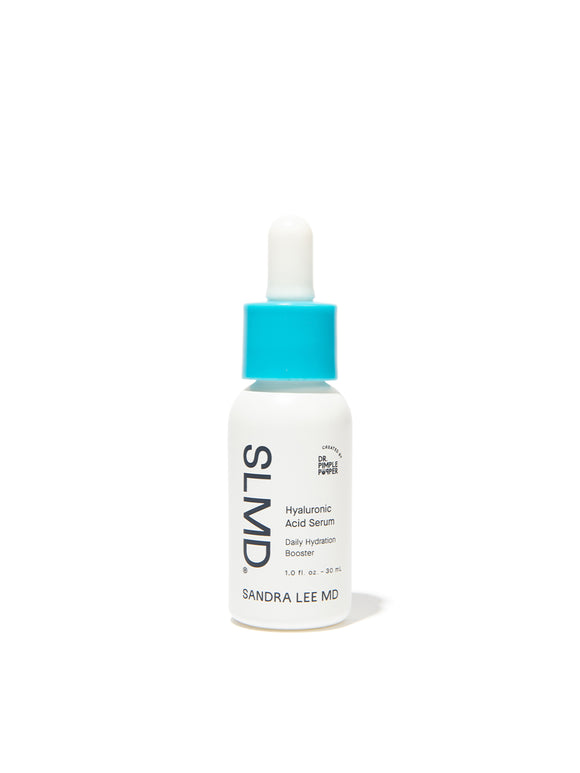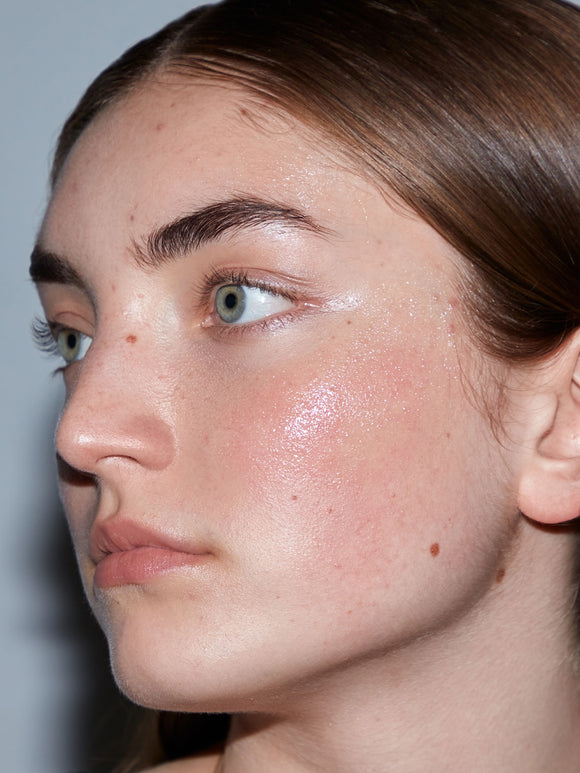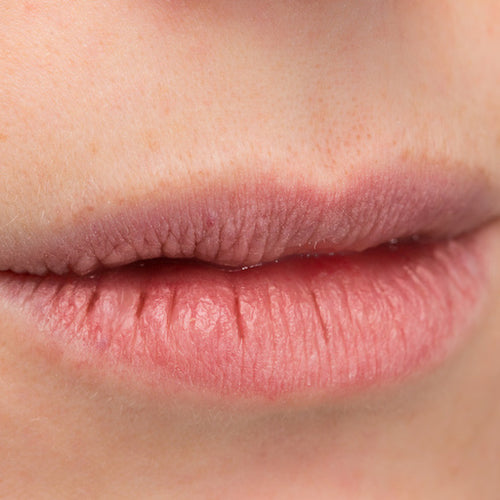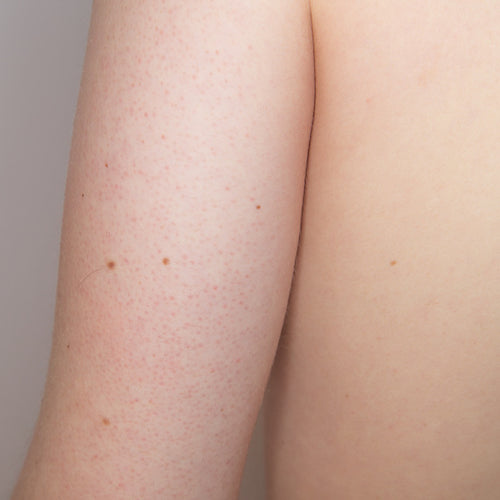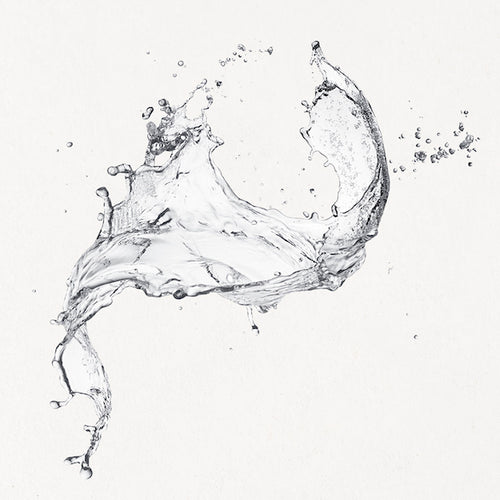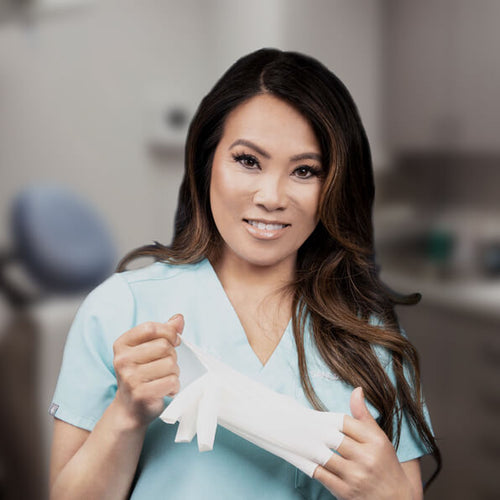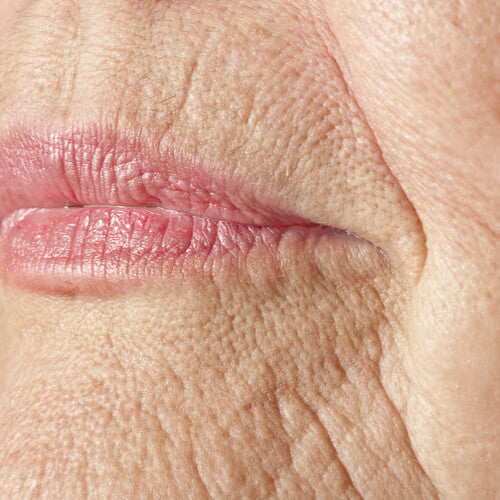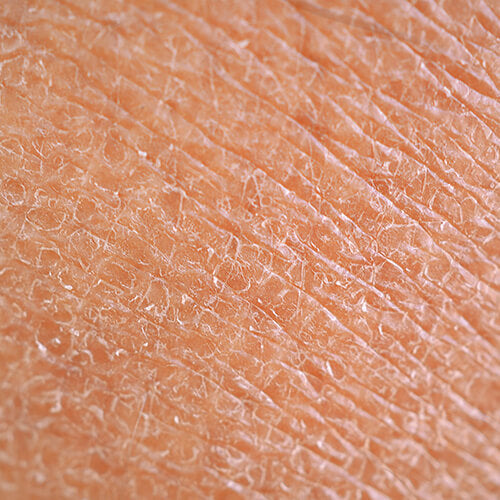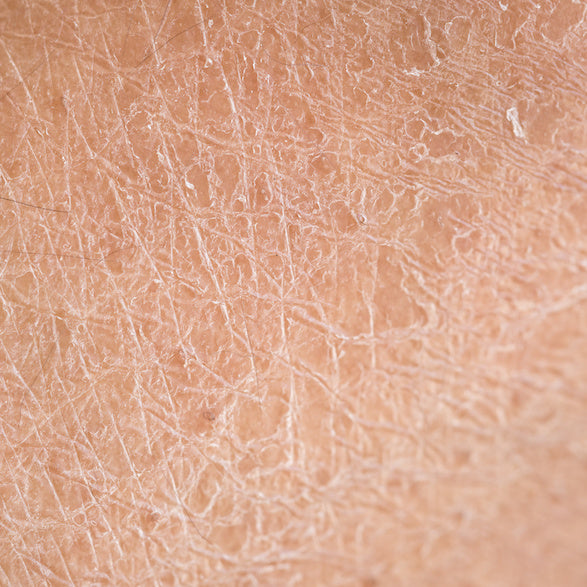
Hydrating vs. Moisturizing: What's The Difference?
We explain how to tell when skin is dry, and when it's dehydrated...and what you can do to fix it.
Published:
2 minute read
Cracked, flaky, peeling skin just means it’s dry, right?
Not necessarily. Just because your face feels like the Sahara Desert doesn’t mean it’s simply dry. Your skin might actually be dehydrated, meaning it lacks water — whereas dry skin lacks oil and needs to be moisturized.
The distinction is important: here’s why.
Article Quick Links
Signs your skin is dry
- Your entire body feels dry, and you constantly need moisturizer
- You have no natural sebum (oil)
- Your skin feels dull, flaky, itchy, and tight
The best treatment for dry skin
Keeping very dry skin moisturized can seem like a full-time task. Make sure you apply moisturizer from head to toe. Here are Dr. Sandra Lee’s favorite dry skin hacks:
For face
Use a moisturizer, even if you have oily/acne prone skin. SLMD Facial Moisturizer contains vitamin C, to boost collagen production and protect the skin from environmental stressors. Hyaluronic Acid Moisturizer draws in and holds onto water to balance and plump the skin.
Add niacinamide to your routine. This potent B vitamin strengthens your skin barrier and helps regulate sebum production. Try it in SLMD All Bright Niacinamide Brightening Toner.
Don’t skip the sunscreen. Protecting your skin from damaging, inflammatory UV exposure will keep your complexion less stressed. SLMD Dual Defender SPF 30 does double duty in a lightweight, nourishing formula.
For body
Start with a good scrub. SLMD Glycolic Acid Body Scrub uses both physical and chemical exfoliants to slough off dead cells gently yet effectively.
Stash body lotion in the shower. Applying SLMD Glycolic Acid Body Lotion to damp skin locks in moisture. This body lotion combines exfoliating glycolic acid with soothing ingredients like aloe.
Dr. Pimple Popper's Dry + Dehydrated Skin Picks
Signs your skin is dehydrated
- Your skin feels oily and dry simultaneously
- Your skin tends to change texture based on your environment, the products you use, and your diet
- You tend to break out occasionally and unexpectedly
- Your skin is dull, congested, and flakes easily
If you’re still not sure your skin is dehydrated, try the pinch test: pinch your skin between two fingers. If it bounces back (meaning it lays flat again) right away, you’re hydrated. If it takes longer to fall, it’s likely you’re dehydrated.
It’s worth noting that your skin doesn’t have to fall into the dry skin type to be dehydrated. Combination and oily skin types can also experience dehydration.
The best way to treat dehydrated skin
- Drink plenty of water. You’ve heard it before: your body is mostly water, so skin suffers if you’re deficient.
- Eat a balanced diet with healthy fats like avocado, olive oil, salmon and nuts, which are high in omega-3, to improve the overall health of your skin
- Wash face in warm — not hot — water. Hot water can dry out skin by allowing moisture to escape.
- Hydrate and moisturize your skin. SLMD Hyaluronic Acid Serum is a great combination hydrator + moisturizer, made with both hyaluronic acid and squalane — an ideal two-in-one combination for treating parched skin.

Dr. Lee's Last Word
When we talk about having dry skin, what we're typically talking about is skin that doesn't produce a lot of natural oils. But your skin can also be dehydrated, meaning it's not getting enough water, or it's losing water too quickly. I always encourage patients to make sure they're eating a balanced diet, drinking enough water, and using products that can help draw water into skin (like hyaluronic acid) and seal in moisture.






